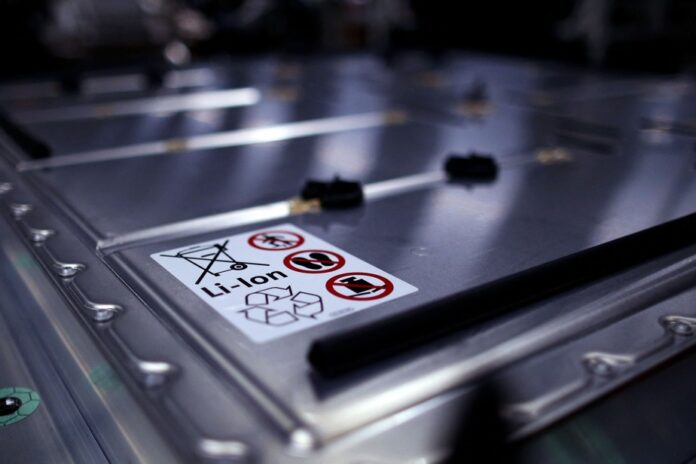The lithium rush in James Bay has just attracted a major player. Rio Tinto, the second largest mining company in the world behind BHP, will invest 65 million in a dozen lithium properties in Nord-du-Québec. For the multinational, Quebec is added to its lithium projects alongside countries such as Serbia and Argentina.
The mining giant is exploring for lithium in different places around the world. He has projects in Argentina and Serbia. However, the latter has been blocked by the local population since January 2022.
“The option agreement between Rio Tinto and Midland will allow the company to access new lithium exploration targets in the James Bay region,” a Rio Tinto spokesperson said in an email. .
“Rio Tinto is proud of the work it does in Canada – which we consider to be one of the best mining jurisdictions in the world – and we believe that Quebec offers good opportunities to continue to grow our business. »
On Wednesday, Midland Exploration announced its agreement with Rio Tinto Exploration Canada. The agreement covers 10 properties totaling 2,009 claims and covering an area of over 1,000 square kilometres. These properties include Mythril-Corvette, Mythril-East, Mythril-Chisaayuu, Galinée, Moria, Shire, Komo, Warp, Sulu and Picard.
Rio Tinto can acquire 50% of the properties within 5 years on the condition in particular of spending 14.5 million on exploration.
After acquiring an initial 50% interest in the properties, Rio Tinto will have the option to increase its interest to 70% within 5 years of exercising the first option, on the condition of spending 50 million on exploration. . Including cash payments to Midland, the investment totals $65.5 million.
It was impossible to speak to Gino Roger, president of Midland.
The properties are currently 100% owned by Midland and are located near major lithium deposits such as its Mythril-Corvette property which is in the Corvette neighborhood owned by Patriot Battery Metals. Its other properties are located near Moblan (Sayona-Soquem), Adina (Winsome Resources), Whabouchi (Nemaska Lithium) and James Bay Lithium (Allkem), all located in the Eeyou Istchee Baie-James region of Quebec.
The news did not go unnoticed in Baie-James. “It’s super interesting,” exclaims Jean-Marc Lulin, President and CEO of Azimut Exploration, which notably holds mining leases with SOQUEM on the Galinée property, which adjoins Adina, where a major lithium discovery was made. by the Australian company Winsome Resources.
“I’ve been working in James Bay for 30 years,” continues the geologist. It is a dynamic that is being put in place that is absolutely exciting. »
Lithium is used as an input in the manufacture of the cathode, the positive pole of the lithium-ion battery of an electric car. The cathode represents about 40% of the cost of a cell.
“It’s a mark of recognition for the junior companies who carry out exploration work on Quebec territory on a daily basis,” rejoices Guy Bourgeois, general manager of the Association de l’Exploration Minière du Québec (AEMQ). . [Rio Tinto] recognizes this expertise through Quebecers who have been doing it for many years and who have had success in the past. »
For him, the announcement stands out for the importance of the sums involved and for the long-term commitment (possibly 10 years) of the multinational.
The James Bay region is experiencing a lithium rush fueled by major discoveries at properties like Winsome Resources’ Adina and Patriot Battery Metals’ Corvette.
Signs of the mining giant’s interest in Quebec lithium have been increasing for 18 months.
Last Monday, Federal Minister François-Philippe Champagne announced the signing of a collaboration agreement with Rio Tinto aimed at supporting the objectives of the Canadian Strategy for Critical Minerals, including lithium.
The Strategy, which was launched in December 2022, has an envelope of $3.8 billion. The proposed financing covers the entire supply chain of critical minerals.
In October 2022, Ottawa announced up to $222 million in funding under the Strategic Innovation Fund to Rio Tinto Fer et Titane to help it increase its production of critical minerals , especially lithium.
In April 2022, an article in La Presse reported Rio Tinto Fer et Titane’s desire to set up a lithium research and development plant.
In this report, Michel Jébrak, professor in the Department of Earth and Atmospheric Sciences at UQAM and author of a book on the challenges of lithium transformation, argued that Rio Tinto was trying to get back on its feet after the failure of its gigantic lithium mine project in Serbia.
Under popular pressure, the Serbian government decided to draw a line under what was announced as the largest European lithium deposit.
This project in the Balkans was to allow the mining company to extract enough lithium to allow the construction of 1 million electric vehicles per year. It was supposed to cost 2.4 billion.
“Rio Tinto has a lithium strategy and wants to turn around quickly after its failure in Serbia,” Mr. Jébrak said, adding that the company had just completed the acquisition of a lithium project in Argentina for 825 million.















